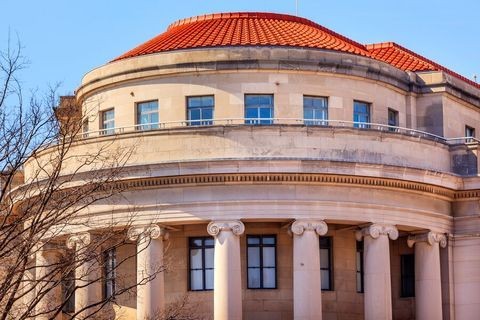FY 2024 NDAA Pumps the Brakes on Mandatory GHG Emissions Disclosure Requirements for DoD Contracts
Client Alert | 2 min read | 01.25.24
Front of mind for many federal contractors is the proposed FAR rule that would make federal contract awards contingent upon meeting mandatory greenhouse gas (GHG) emissions requirements. But a provision in the recently enacted National Defense Authorization Act (NDAA) for Fiscal Year (FY) 2024 scales back the reach of that potential rule on Department of Defense (DoD) contracts.
As we have previously covered here, the FAR Council in November 2022 published a proposed rule that would, if finalized, require many federal contractors receiving more than $7.5 million in annual federal contracts to inventory and publicly disclose greenhouse gas (GHG) emissions on an annual basis or risk being found ineligible for award. “Significant” contractors receiving more than $50 million annually would be further required to make enhanced climate disclosures and to set emission-reduction targets. The FAR Council is still reviewing public comments on the proposed rule and has yet to publish a final rule.
Among the myriad changes to DoD acquisition policy in the FY 2024 NDAA (discussed in depth here), Section 318 constrains DoD’s ability to award contracts contingent on mandatory inventory and public disclosure of GHG emissions. Specifically, the NDAA: (1) prohibits DoD from requiring companies that have not contracted with DoD over the past year (referred to as a “non-traditional defense contractor”) to disclose GHG emissions as a condition of award; and (2) mandates a one-year pause, until December 22, 2024, on DoD requiring all other contractors from disclosing GHG emissions as a condition of award.
DoD may only require disclosure as a condition of award if a company has already voluntarily made such GHG disclosures. Section 318 also authorizes the Secretary of Defense to issue a waiver—thus permitting DoD to require GHG disclosure—but only on an individual contract basis in situations where the GHG emission disclosure is “directly related” to performance of that specific contract.
The outright prohibition on GHG disclosure requirements for new entries into the DoD contracting arena is impactful. The effect of the one-year moratorium for current DoD contractors may be muted, however, as the proposed FAR rule already signaled that the mandatory GHG emissions disclosure requirement would not begin until one year after publication of the final rule (which the FAR Council has yet to issue). It is also important to note that this NDAA provision only applies to DoD agencies, not civilian agencies—which could create complexities for companies that bid on both DoD and non-DoD contracts, such that they could be subject to the reporting requirements in order to be eligible for non-DoD contracts. It is also unclear whether this NDAA provision bars DoD from requiring significant contractors to set emission-reduction targets as a condition precedent to award of DoD contracts, as the FAR rule proposes to do.
The Crowell team continues to track these developments and assist federal contractors in understanding the implications of these new regulations.
Insights
Client Alert | 11 min read | 05.17.24
FTC Finalizes Modifications to Broaden the Applicability of the Health Breach Notification Rule
On April 26, 2024, the Federal Trade Commission (“FTC”) announced a final rule (“Final Rule”) modifying the Health Breach Notification Rule (“HBNR”). The Final Rule, which largely finalizes changes proposed in a Notice of Proposed Rulemaking published last year (“2023 NPRM”), broadens the scope of entities subject to the HBNR, including many mobile health applications (“apps”) and similar technologies, and clarifies that breaches subject to the HBNR include not only cybersecurity intrusions but also unauthorized disclosures, even those that are voluntary. The Final Rule will take effect 60 days after its publication in the Federal Register.
Client Alert | 5 min read | 05.16.24
CMS Finalizes Contested Rule on Nursing Home Staffing and Facility Assessments
Client Alert | 3 min read | 05.15.24
Client Alert | 3 min read | 05.14.24





